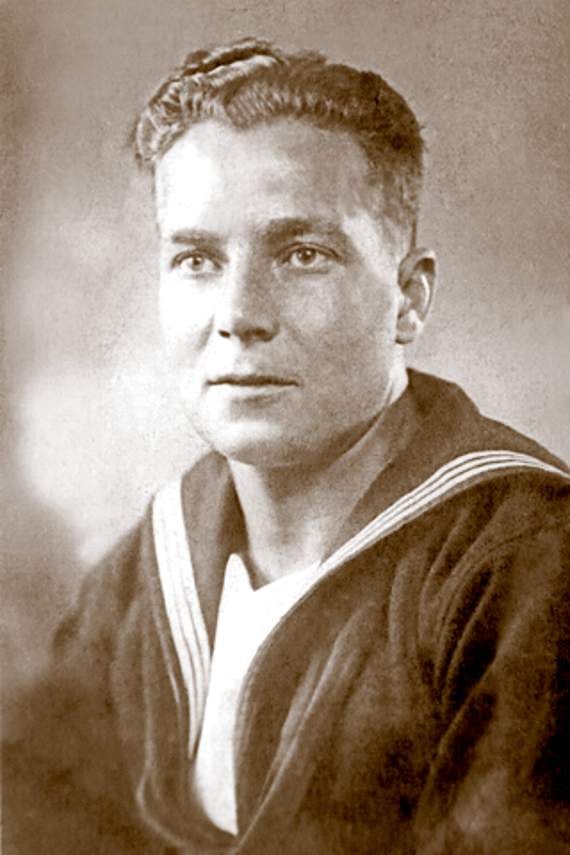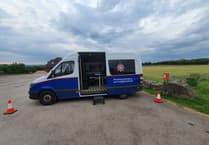THE last survivor of a ship sunk during one of the first major naval battles of World War Two has died at the age of 97.
As a 20-year-old volunteer sailor, Fred Ward of Cinderford was one of 45 survivors of the 157 crew of HMS Hunter which was sunk in the first Battle of Narvik off the coast of Norway in April 1940.
His ship was part of a flotilla which sailed with HMS Hotspur, HMS Hostile and HMS Havock and led by HMS Hardy which set sail from the Orkneys for Norway on April 9.
The following day they entered Ofotfjord, unnoticed by German shipping because of the blinding snow.
The battle opened with Hardy firing two torpedo at the German flagship, Willem Heidkamp.
The Hunter and Havoc pressed home the attack but first Hardy and then Hunter were hit.
After the captain gave the order to abandon Hunter, Mr Ward jumped into the freezing waters of the 1000ft deep fjord, where he was quickly picked up by one of the few German vessels still in the area.
It was not the only time that Mr Ward, who volunteered for the navy when the war broke out in 1939, would be plucked from icy northern waters.
His son, Robin, said: “Most of those who died on the Hunter were below decks. Dad was on the forward gun and was able to jump into the sea. The rear gun was completely destroyed.
“As soon as he hit the water he thought he was going to die because of the cold.
“He watched the Hunter go down and he was pulled into a lifeboat.”
The survivors were taken to the town of Narvik and, from a hill, witnessed the second battle when the German force was destroyed.
They were then force-marched to neutral Sweden where they were given the option of signing an undertaking not to take up arms again or be shot.
But Mr Ward was soon back on board another boat making the hazardous journey from Sweden to Britain with a smuggled cargo of Swedish iron ore.
When the ship was intercepted, the captain “blew the bottom out of her” to prevent the ore falling into German hands.
He spent the rest of the war in German prisoner of war camps where he was forced to work in mines or make heavy chains for the Nazi war effort.
His son said: “Some of the stories he told us were incredible – he saw people shot for insubordination or trying to escape.
“It must have affected him so strongly because even in his 90s he could recall exact facts and it was really clear in his mind.”
He was eventually liberated by the advancing Russians who pointed him and his mates in the direction they needed to walk to get home.
They made it to an airbase where they were flown home – and he was allowed to sit in the glass nose of a Lancaster bomber.
At home in Steam Mills, his mother had no idea whether he was alive or dead until he walked into the garden where she was cleaning a carpet.
Robin said: “She had a letter saying he was dead after the Hunter went down and then another saying he was in Sweden and another saying he was missing. She had no idea if he was alive or dead.”
After the war Mr Ward returned to the mines where he had started as a 14-year-old working with pit ponies and went on to work at every pit in the Forest.
He later worked in the local brickworks and finished his working life as a paint sprayer at Rank Xerox in Mitcheldean.
He married his wife, Olive, soon after returning from war and the couple spent the next 71 years together, living at the house they bought in Victoria Street in Cinderford for 48 years.
They had six children, 13 grandchildren, and great-grandchildren.
His son said: “Over the years, I’ve sat down and listened to him talk and pictured what he went through.
“I can’t imagine going through that amount and coming out at the end of it and then bringing up a family and doing everything right – but that’s what he did.”
In 2007 when the remains of HMS Hunter were found, Mr Ward was invited to a commemoration but was unable to attend, although his name was mentioned at the ceremony.
He also spoke to researchers from the Imperial War Museum about his experiences.
Robin said: “He was a private man who loved the Forest and nature. If he wasn’t in the forest he was in the garden.”
The funeral will take place at St Stephen’s Church in Cinderford on Thursday, February 9 at 10.30am followed by burial at Yew Tree Brake Cemetery.





Comments
This article has no comments yet. Be the first to leave a comment.